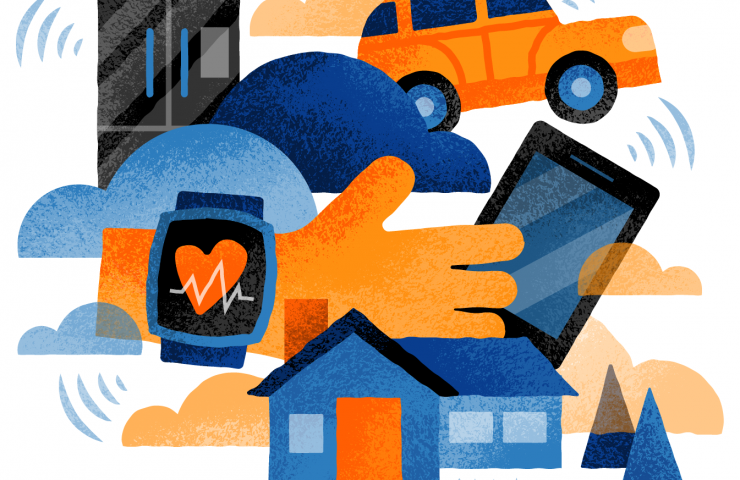How does the Internet of Things work?
The Internet of Things or IoT (Internet of Things) is essentially a network of networks in which people can communicate with devices, and devices can communicate with each other, react to changes in the environment and make decisions without human intervention.
IoT devices function on their own, although people can configure them or provide access to data. IoT systems operate in real time and usually consist of a network of smart devices and a cloud platform to which they are connected using WiFi, Bluetooth or other types of communication.
What happens when the temperature gets too high or a burglar appears in the house? The system notifies the user about this or performs further actions itself - for example, turns on the air conditioner or calls the police.
What is the Internet of Things made of?
In addition to Big Data, analytics, connections, devices and experience are also important for the Internet of Things. For simplicity, this principle is presented as ABCDE: Analytics, BigData, Connection, Devices, Experience.
- Analytics (analytics) is a key link in the functioning of IoT, which unites the devices themselves, data from them and optimizes business processes;
- BigData - that is, information from devices - is stored in the cloud. They allow you to automate existing processes or build new ones;
- Connection is the channels through which devices receive and transmit information;
- Devices (devices) - devices connected to the system, which for correct operation, depending on the tasks, must have an appropriate frequency of messages;
- Experience - working with the existing experience of solving customer problems using IoT, its analytics and rethinking.
Where is the Internet of Things used?
IoT enables companies to automate processes and reduce labor costs. This reduces the volume of waste, improves the quality of services provided, and makes the production process and logistics cheaper.
According to a study by IoT Analytics, in 2020, the highest level of IoT technology penetration was observed in transport, energy, retail, city life management, healthcare and industry.
In the power industry, the Internet of Things improves controllability of substations and transmission lines through remote monitoring.
In healthcare, IoT allows you to move to a new level of diagnostics of diseases - "smart" devices monitor the patient's health indicators in the background.
In agriculture, smart farms and greenhouses doze fertilizer and water themselves, and smart animal trackers notify farmers in time not only about the location of animals, but also about their health status, analyzing heart rate, body temperature and general activity.
In transportation, typical IoT solutions include telematics and smart fleet management, where the vehicle connects to a local operating system for monitoring and diagnostics. Statista estimates that $ 740 billion will be invested in the development of IoT for cars by 2025.
In urban environments, IoT solutions help automate lighting, while reducing lighting costs by up to 30-50%. Smart meters, which themselves record and transmit information on costs and wear and tear to management companies, relieve city dwellers from the need to verify and send data on energy consumption themselves.
In logistics, IoT reduces the cost of transportation and minimizes the impact of the human factor. IoT systems can also monitor the occupancy of trash cans and optimize waste collection costs based on this data.
In retail, IoT allows brands and sellers to optimize costs and improve customer experience through digital signage, tracking customer interactions, inventory management and smart vending machines, according to Maxim Lipatov. The market is expected to grow from $ 14.5 billion in 2020 to $ 35.5 billion by 2025, according to ResearchAndMarkets.
How is IoT useful for humans?
The Internet of Things is associated with a smart home for many. Thanks to technologies and devices developed by Google, Yandex, Amazon, Apple and others, users can make online purchases, adjust the temperature in the room, turn on the lights and music, and give voice commands to virtual assistants.
You no longer need to fear that you forgot to turn off the iron or the tap - just press a button on your smartphone and the smart home will fix everything. Or you don't have to press, because the house is so smart that it will put everything in order itself, and the owner will be notified of the result. A computer vision surveillance system will recognize anyone walking past your apartment and compare the images with the police base.
Today, a "smart" home in Russia is basically Yandex's intellectual assistant "Alice", which turns on music, searches for information on the Internet, advises films, adjusts lighting and temperature in




